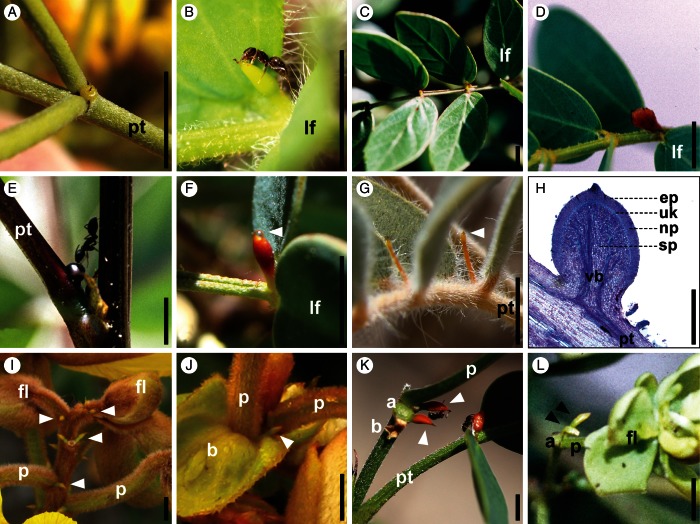Fig. 2.
Diversity of EFNs in Senna – EFN clade. The phylogenetic position and size of the EFN clade with respect to the other clades is illustrated in the Senna cladogram in Fig. 1. (A–H) iEFNs on leaves; species ordered by clade (clades IV–VII). (A–E, G, H) EFNs between leaflets (first only or also subsequent pairs); arrowheads indicate nectar drop. (F) EFNs at the base of petiole. (H) Median longitudinal section of an iEFN with four kinds of cell layers. (I–L) iEFNs at the base of pedicels (arrowheads). (A) S. artemisiodes (IVa). (B) S. pilifera (IVb). (C) S. cana var. calva (V). (D) S. aversiflora (VI). (E) S. occidentalis (VIIa). (F) S. purpusii (VIIa). (G) S. covesii (VIIb). (H) S. pendula (VIIb). (I, J) S. bracteosa (V; photo courtesy of D. Cardoso). (K) S. pallida (VI). (L) S. tonduzii (VI). Abbreviations: a, abscission of pedicel; b, bract; ep, epidermis; fl, flower developing; lf, first (proximal) pair of leaflets; np, nectary parenchyma; p, pedicel; pt, petiole; sp, subnectary parenchyma; uk, layers of unknown function; vb, vascular bundles. Scale bars (indicative): (A–G, I–L) = 5 mm; (H) = 1 mm.

